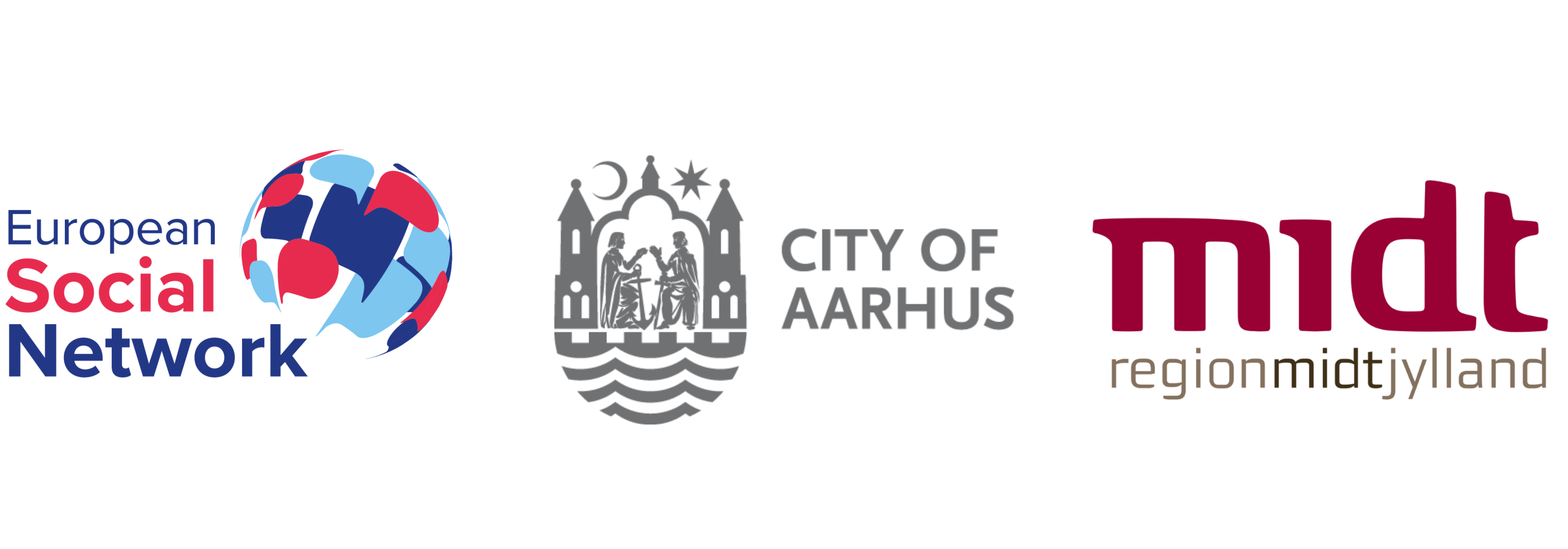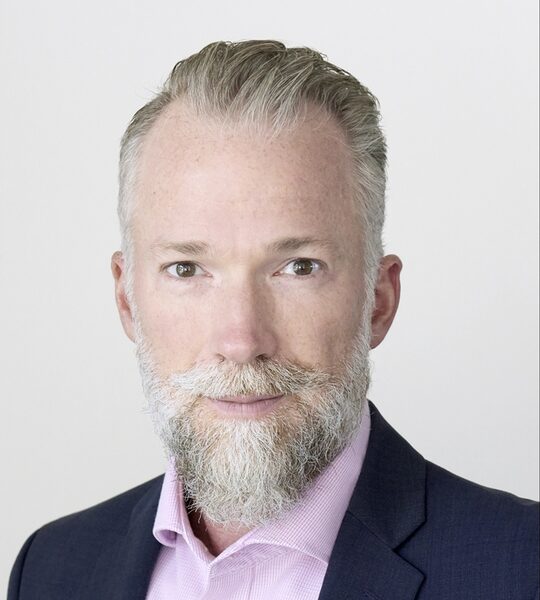As we continue our Spotlight Series in the lead-up to the European Social Services Conference (ESSC) 2025, we turn our focus to a critical area of social services transformation—assistive technology. This year’s conference theme, “Transforming Social Services: Where Care Meets Tech”, highlights how innovation is reshaping the way we support individuals and communities, making services more inclusive and accessible.
In this edition, we speak with Pascal Bijleveld, Chief Executive Officer of ATscale, the Global Partnership for Assistive Technology. With over 20 years of leadership experience in global development, Pascal has worked across both public and private sectors to expand access to assistive technology in low- and middle-income countries. He is a strong advocate for innovation as a driver of sustainable impact, economic value, and a more inclusive society.
In our conversation, Pascal shares his insights on the life-changing impact of assistive technology, the biggest challenges to scaling access globally, and the critical role of social service professionals in ensuring these innovations reach those who need them most. He also discusses why overcoming systemic barriers is just as important as developing new technologies—and how a coordinated, well-funded approach can create a future where assistive technology is accessible to all.
What drew you to the field of assistive technology, and how has your diverse background in global development shaped your approach to this area?
The transformative potential of assistive technology is truly compelling. For example, a wheelchair, an artificial limb, a pair of eyeglasses or a hearing aid can make the difference between failure or success at school, between a job or unemployment, between a life of opportunity or a life of dependency. AT allows children to play and learn, adults to work and travel, and older people to join in with family and community life.
Coming from other areas in global health into this field, I was shocked at just how often provision and procurement of assistive technology is left out of the story of inclusive health, education and social services. I saw firsthand how lack of access to appropriate technology was holding people back from reaching their full potential. It wasn’t just about the devices, but about the systemic barriers that prevented people from participating in society. My past experiences gave me a strong understanding of the interconnectedness of most issues, and the importance of combining a systems strengthening approach with one that looks at the markets. Ultimately, sustainability will only be achieved if we can create a healthier market for assistive technology. That’s why, as CEO of ATscale, I am committed to not only providing assistive products but also working on advocacy, policy, financing, and capacity building to create a truly harmonized ecosystem.
What role do you believe social service professionals can play in ensuring that assistive technology is effectively integrated into the social services systems across Europe?
Social service professionals are on the front lines, working directly with individuals and families. They are crucial in bridging the gap between assistive technology and the people who need it. They can play a vital role by:
- Raising awareness: Educating themselves and their colleagues about the benefits of AT and how it can be integrated into their services.
- Assessing needs: Conducting thorough assessments to identify individual needs and recommending appropriate AT solutions.
- Facilitating access: Connecting individuals with AT providers and supporting them to navigate the process of obtaining and using AT.
- Advocating for change: Championing the inclusion of AT into policy and funding decisions, ensuring that AT is a core part of social service delivery.
By becoming champions for assistive technology, social service professionals can ensure that everyone has the opportunity to benefit from its transformative power, not only in Europe but across the world.
What are some of the biggest obstacles to scaling assistive technology solutions in low- and middle-income countries, and how can we overcome them to ensure more widespread access?
Globally, over 2.5 billion people need to use AT. Today in low-income countries only 10% of people have the AT they need, in stark contrast to the 90% of people in need in high-income countries who do. This gross inequity is unacceptable. The number of people who need AT across the world is growing fast due to ageing populations and non-communicable diseases. By 2050, an estimated 3.5 billion people will need AT.
Scaling up access to assistive technology in LMICs is a complex challenge. The systems to support access to AT for all are currently underdeveloped. Many cross-cutting factors influence this including:
- inconsistent political will
- lack of understanding
- lack of commercial focus
- significant gaps in resources and investment.
Market barriers limit both supply and demand of AT. There may be inadequate demand for AT from users, service providers, and country governments. Reasons for this may include a lack of awareness, stigma and discrimination, insufficient and inadequately trained providers, lack of inclusion in insurance schemes and fragmented procurement systems.
On the supply side, AT products may not be sufficiently available, affordable, appropriately designed, and of assured quality. All these present challenges and barriers in AT markets.
ATscale was set up to make change happen for assistive technology. As the global partnership for assistive technology, we convene partners globally and nationally, and engage AT users, to drive progress across three mutually reinforcing strategic pillars:
- Supporting Country Plans, and their implementation, to strengthen their AT policies, systems, services and financing in over 30 countries across multiple product areas;
- Strengthening Global Enablers, the global tools and resources, such as knowledge, guidance and product information, that countries need to make progress, such as healthy markets that deliver reliable supplies of quality, affordable products;
- Advocating for Change to catalyse political will, build public awareness and raise overall resources.
When partners have come together across other sectors to coordinate, to raise political will, to secure additional resources and to use evidence-based approaches to transform systems and services, including markets, attention and investment has followed and I am optimistic this can happen in the field of assistive technology. Overall funding and support for AT remains dismally low. Our effort requires resources, both embedded and streamlined in all programming as well as dedicated and targeting resourcing.
You emphasize that investing in assistive technology is not just a right but a smart economic decision. Can you elaborate on how this benefits both individuals and the broader economy?
Yes, that’s right. Investing in AT both has a transformative impact on people’s wellbeing and makes sound economic sense for funders and governments. It is both the right thing and the smart thing to do.
Economically, the figures are dramatic. Investment in just four products – hearing aids, prostheses, eyeglasses and wheelchairs – will result in a return of investment of 9:1. For a child in a low- or middle-income country, access to AT can later make a difference of US$100,000 in lifetime income.
With AT, over 2.5 billion more people have the potential to participate in education, the workforce, the economy, and contribute to a country’s social development and economic growth.
For individuals, that means increased independence, improved quality of life, and more opportunities for education, and employment.
For the broader economy, AT means reduced healthcare costs, increased productivity, and greater social inclusion, where everyone has the opportunity to contribute and thrive.
As the world faces challenges such as ageing populations, increased conflict, and displacement, how do you envision assistive technology playing a role in supporting vulnerable groups in society?
In a world facing increasing challenges, AT will play an even more critical role in supporting vulnerable groups. Leaving No One Behind is impossible without universal access to assistive technology. People face access barriers related to their age, disability, gender, type of functional difficulty, living environment, and socioeconomic status.
For example, AT can help older adults maintain their independence and quality of life as they age, enabling them to live at home longer and participate in society. AT can also be crucial to survival in humanitarian settings, for accessing assistance and information, and restoring livelihoods.
Looking ahead, what is your vision for the role of assistive technology in transforming social services in the next decade?
My vision for the next decade is a world where assistive technology is made a priority and integrated into all aspects of social service delivery. We need to focus on creating a system that is:
- Person-centered: AT solutions are tailored to the individual needs of the user, taking into account their circumstances and preferences.
- Accessible and affordable: AT should be available to everyone who needs it, regardless of their social status or where they live.
- Inclusive by design: All services should be designed with accessibility in mind, ensuring that everyone can participate.
As we look toward the future of social services, the transformative potential of assistive technology cannot be overlooked. With leaders like Pascal Bijleveld, we are seeing a significant shift towards a more inclusive, accessible and sustainable approach to social service delivery. By overcoming systematic barriers, raising awareness and fostering collaboration across sectors, assistive technology has the potential to contribute to social development and economic growth by allowing more people to participate in the workforce, education and the overall economy. Ensuring equal and universal access to assistive technology further reduces care costs and drives productivity. In embracing this vision, we can create a future where assistive technology empowers individuals, strengthens communities, and ensures that no one is left behind.

